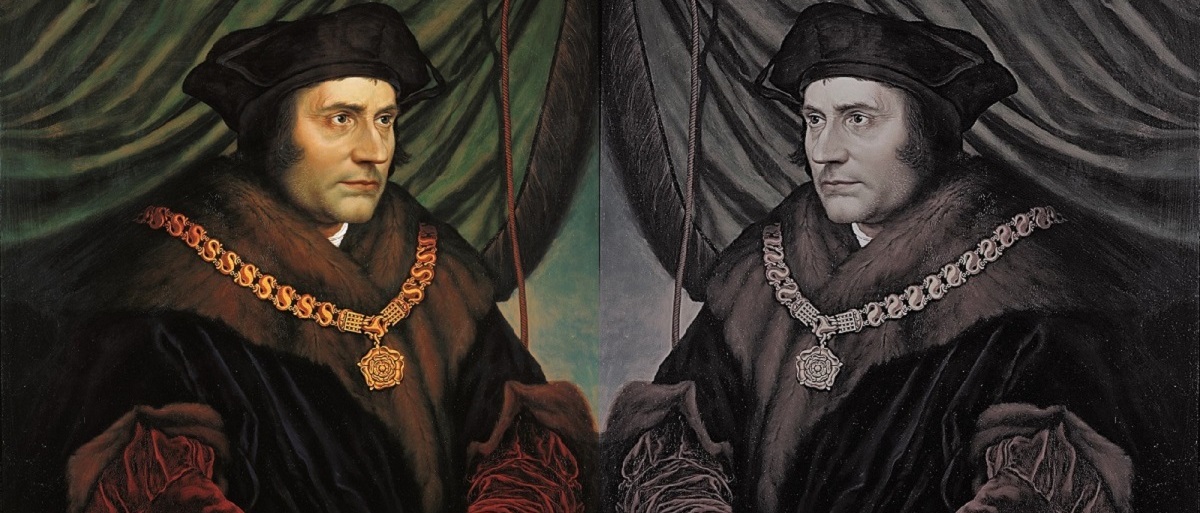Thomas More
Posted on 7th February 2021
Thomas More was an English lawyer, statesman and writer. He was born on 7 February 1478 in Milk Street, London, the second of six children to lawyer and judge Sir John More and Agnes Graunger.
More was raised in a wealthy family and given an excellent education at St Anthony’s School, then, one of the finest schools in London.
During his youth, between 1490 – 1492 he worked as a household page to John Morton, Archbishop of Canterbury and Lord Chancellor of England.
It was Morton who nominated More for a place at the University of Oxford, where he began his classical studies in 1492, becoming proficient in both Greek and Latin. His time at Oxford was cut short after two years, when his father insisted he begin his legal training. More returned to London in 1494 and in 1496 he joined Lincoln’s Inn, one of the Inns of Court (professional association for barristers/lawyers). Here he stayed until 1502 when he qualified as a lawyer. His political career was to start in 1504 when he was elected as a Member of Parliament.
Shortly after in 1505 he married Jane Colt and they had four children together, however his wife died in 1511 leaving More to care for the young children. Although very unusual at the time More married again less than thirty days after the death of his first wife, maybe to have a mother figure for his children.
More believed in giving all his children a good education, therefore his daughters received the same classical education as his son John, this was also very unusual at the time.
In 1510 More began representing London in Parliament, and he became Undersheriff of London. In 1514 he became Master of Requests and was also appointed a Privy Counsellor (King’s adviser).
More was then knighted and made Under-Treasurer of the Exchequer in 1521, then later named Speaker of the House of Commons. In 1525 he was also named Chancellor of the Duchy of Lancaster.
Although More refused to endorse Henrys decision to divorce his wife; In 1529 following the downfall of Thomas Wolsey, he became Lord Chancellor.
During his life More was a devout Catholic and a supporter of the Catholic Church. He became Chancellor at a time when Henry continued to strive for an annulment of his marriage to Catherine Of Aragon, and during the English Reformation (religious divide of the Catholic Church) which More believed was heresy.
More continued to support the papacy against Henry and refused to sign a letter by leading English churchmen asking Pope Clement VII to annul Henrys marriage.
As Henry VIII could not secure the Pope’s agreement to an annulment, he decided to break from the Catholic Church and form the Church of England.
By 1531 Henry had removed most of the clergy who continued to support the papacy from senior positions and a royal decree required the clergy to take an oath recognising the King as Supreme Head of the Church of England.
More felt he could no longer support the King and alleging ill-health, asked to be relieved of his office as Lord Chancellor; this was granted by the King.
More would not accept Henry as head of the Church; he was therefore arrested in 1534 for refusing to swear an oath of succession, against the Pope and in support of an annulment for Henrys marriage to Catherine of Aragon, also refusing to acknowledge Anne Boleyn as the rightful Queen.
Thomas More was imprisoned in the Tower of London, tried for treason and executed on 6 July 1535.
While on the scaffold awaiting his execution, he is purported to have said ‘The King’s good servant, and God’s first’.
He is buried in St Peter ad Vincula in the Tower of London.
Tagged as: Junior Tudors
Share this post:





